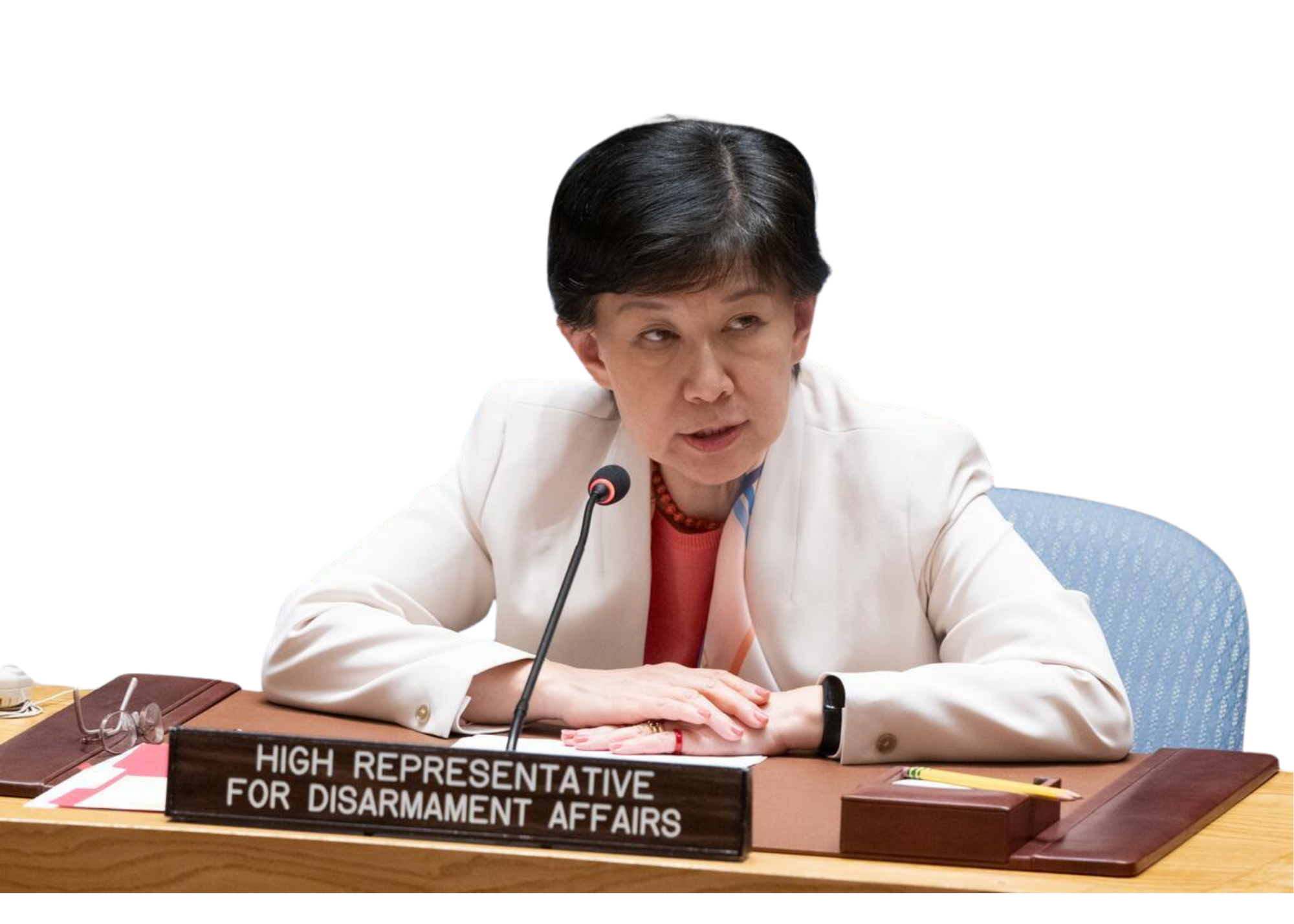Foreword
I am pleased to present the 2024 United Nations Disarmament Yearbook. For nearly five decades, this publication has provided an objective record of developments in multilateral disarmament, non-proliferation and arms control. Now in its forty-ninth volume, the Yearbook continues its vital mission to document efforts by the United Nations, Member States and other stakeholders to advance international peace and security through disarmament initiatives and arms control measures. Its enhanced preview edition, issued earlier in the year, equips policymakers and the public with a timely and authoritative overview of the most salient developments in this field.
[T]he 2024 Nobel Peace Prize was awarded to Nihon Hidankyo ... a poignant recognition of the tireless efforts of atomic bomb survivors to bear witness to the horrors of nuclear weapons and to advocate for their abolition.
As we reflect on the past year, we face a sobering truth: the international security architecture, built painstakingly over decades, now faces extraordinary strain. The proliferation of active conflicts, the erosion of established arms control frameworks and unprecedented military spending all signal a regression in our collective commitment to peace and security. The rapidly accelerating pace of these challenges starkly contrasts with the deliberate tempo of diplomatic processes — a fundamental misalignment portending yet more peril for people and the planet.
It is in this context that the 2024 Nobel Peace Prize was awarded to Nihon Hidankyo — the Japanese Confederation of A- and H-Bomb Sufferers Organizations — a poignant recognition of the tireless efforts of atomic bomb survivors to bear witness to the horrors of nuclear weapons and to advocate for their abolition. This award arrives at a watershed moment, as the youngest hibakusha are now in their 80s, their lives having paralleled the existence of our Organization.
[B]oth the United Nations and the hibakusha ... have carried forward a shared mission: to spare our children and descendants from the ravages of war and the existential threat of nuclear annihilation.
Indeed, both the United Nations and the hibakusha emerged from the cataclysm of the Second World War. For nearly eight decades, they have carried forward a shared mission: to spare our children and descendants from the ravages of war and the existential threat of nuclear annihilation.
As we witness the gradual passing of this generation of survivors — both the hibakusha and all those who withstood the global conflict — we confront not only the loss of their irreplaceable testimony, but also the fading of the firsthand insight that birthed our multilateral institutions. We must ask ourselves: Can succeeding generations sustain what was forged in the crucible of shared suffering? The answer to this question may well determine whether the founding purpose of the United Nations is reinvigorated as a living commitment or becomes an artefact of history.
Youth Leader Fund for a World without Nuclear Weapons was launched with the explicit aim of carrying forward the legacy of the hibakusha ... [and] reached young advocates in 63 countries in 2024
It is with this sobering responsibility in mind that the Office for Disarmament Affairs continued its essential work throughout 2024. Most notably, the Youth Leader Fund for a World without Nuclear Weapons was launched with the explicit aim of carrying forward the legacy of the hibakusha, helping the wisdom borne of their experiences to endure. This comprehensive learning and professional development programme reached young advocates in 63 countries in 2024, marking one of our broadest and most direct efforts to preserve the visceral understanding that has animated our founding purpose.
These developments support the global commitments enshrined in the Pact for the Future ... in which Member States reaffirmed their resolve to work together in tackling long-standing and novel security challenges.
The year also witnessed progress on traditional and emerging security threats. In June, Member States agreed to establish an open-ended technical expert group to tackle rapidly advancing technologies in the small-arms landscape — from polymer weapons that defy standard tracing to 3D-printed firearms circumventing existing regulatory frameworks — a crucial adaptation of our collective security mechanisms to innovation’s quickening pace. On cybersecurity, States forged new consensus through an open-ended working group on information and communications technologies, unpacking common understandings around threats both current and anticipated, laying groundwork for greater trust through new confidence-building measures, and charting the architecture for a future permanent mechanism in this increasingly vital domain. These and other developments support the global commitments enshrined in the Pact for the Future, which world leaders adopted in September 2024 — particularly actions 25 through 27, in which Member States reaffirmed their resolve to work together in tackling long-standing and novel security challenges.
The Yearbook itself represents our commitment to documenting these ongoing efforts — creating a record that connects our present work to both our founding purpose and the tests that lie ahead. Even as we acknowledge the headwinds of this moment, we remain steadfast in our commitment to the vision that gave birth to both this Organization and the disarmament movement: a world free from the scourge of war and all its sorrows.
